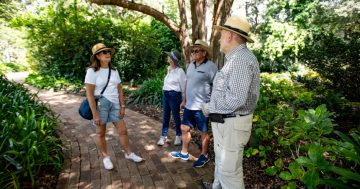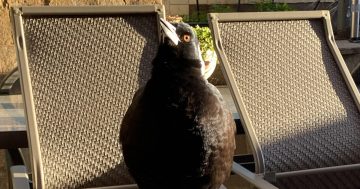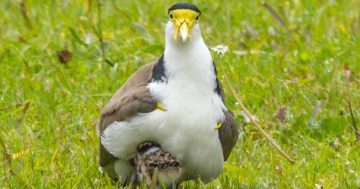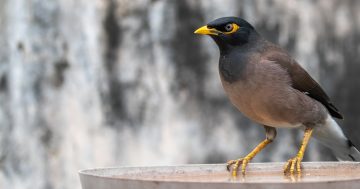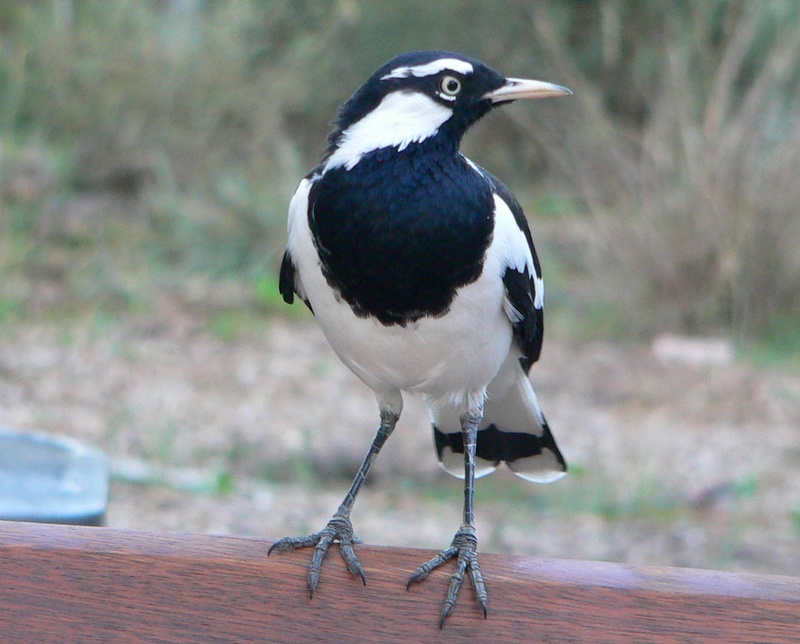
Male Magpie-lark with black chin and forehead, and not a trace of fear. Photo: Ian Fraser.
One of the most familiar birds in the Illawarra is also very well-known across almost the entire mainland.
You might know them by any of a few different names. I grew up in South Australia calling them Murray Magpies, or Peewees, though the ‘official’ name is Magpie-lark.
This is one of those weird Australian names that was coined to come to terms with the totally unfamiliar birds early British settlers encountered here.
The birds were called ‘Magpie’ because it was black and white like a European Magpie, though neither it, our Magpies, nor the Magpie-larks, are the least bit related to each other. The ‘lark’ part of the name is a total mystery and I can’t offer even speculation about what the homesick settlers were thinking when they tacked it onto ‘magpie’ to describe our bird.
Peewit – like peewee, an attempt to replicate the shrill call – and Mudlark, for the beautiful mud nest, are two other commonly used names. (There is a furphy which does the rounds every now and then that the ‘piping shrike’ on the South Australian coat of arms is actually a Magpie-lark, but not so – it’s a very distorted Magpie.)
They are utterly fearless, as black and white birds tend to be, their striking plumage declaring something like, “yes, I’m tough enough that I don’t mind being seen, so don’t mess with me!”.
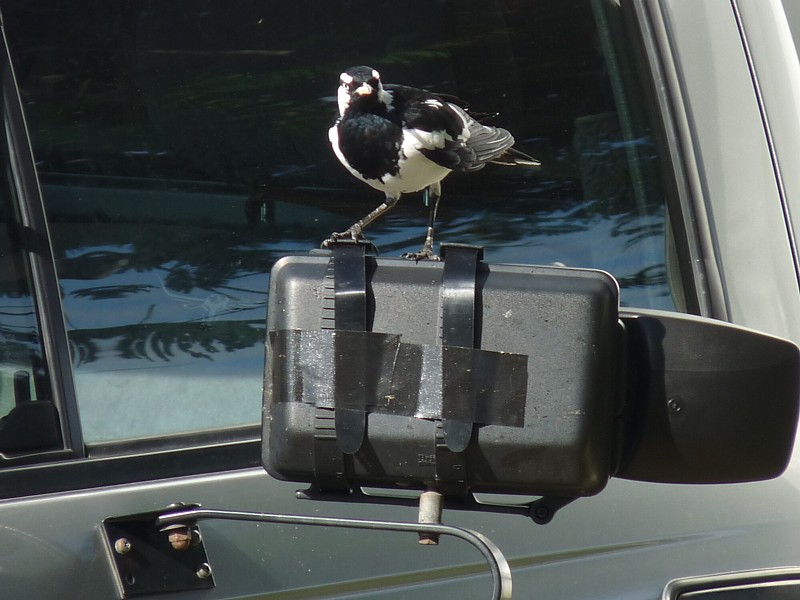
Magpie-lark on car mirror, taking a break from attacking its reflection. Photo: Supplied.
When I lived in the inner north of Canberra, a pair set up territory outside the GPO. They would strut along the footpath, daring anyone not to step around them and shrieking outrageous abuse at anyone they didn’t like the look of – which was most of humanity.
These shrieks can pierce the brain at close range. As a jazz fan, I am reminded of Miles Davis’s trumpet at full blast from one of his more challenging periods.
It’s not just bluff, either. They regularly chase bigger birds, including currawongs, kookaburras, ravens and even eagles away from the nest and have been known to attack people. They are notorious for attacking their reflection in windows and car mirrors in the belief that they’re chasing off a rival.
Magpie-larks form long-term pairs that stay together all year round, and their calling helps maintain this bond. If you watch very carefully, you will see that one bird begins the fanfare of sound and the other finishes it off, or they will even alternate notes, but it’s so tight that it can be very difficult to determine where one stops and the other takes over.
They are telling the neighbours, and any strangers who happen to be passing through, that their territory is taken and they’re very much a team – neither is available for a new relationship.
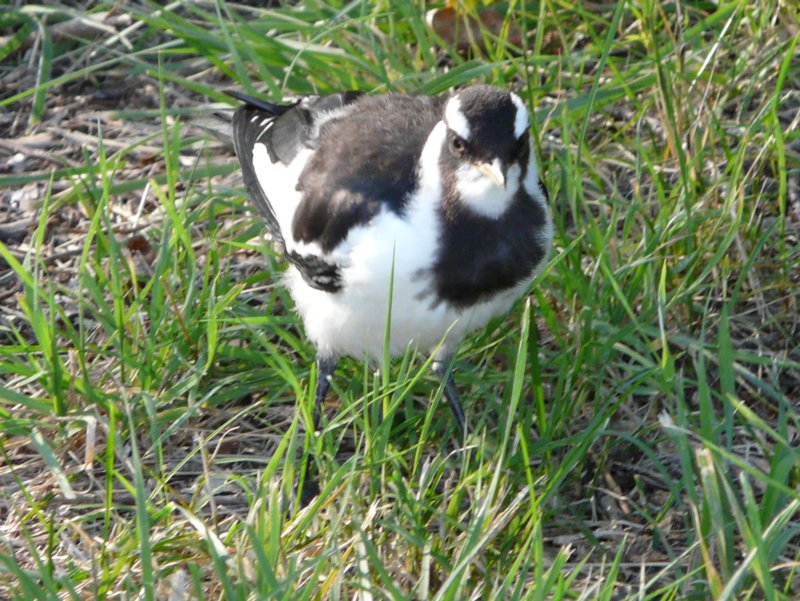
Young Magpie-lark with black forehead and white throat; one of these will change colour when it first moults. Photo: Ian Fraser.
You can easily tell which of the pair is which. The male has a black forehead and throat, while in the female both are white. Curiously the chicks all have black foreheads and white throats and sort it out after the first moult.
Magpie-lark nesting traditionally begins in the last week of August but, as with so many other things, that may be getting earlier as the earth warms.
Both parents are involved in all stages of breeding which must be near water because the nest needs mud. It is a beautiful neat hemispherical cup built of mud bound with grass, placed on a flat branch or artificial structure. As the cup dries in the sun, it is lined with loose grass and feathers and usually three eggs are laid into it.
When they’re ready to leave the nest, the parents divide the chicks up and look after either one or two each, perhaps in your front and back yards. If they lose the offspring, they will start again. In a good season, such as the last couple, they will raise their brood, send them on their way and then breed again. No wonder they’re so common!
I can’t imagine a world without the self-important, confident, shrieking Magpie-larks to keep me in my place. I rather think they’ll survive our impacts better than most others, though.
Ian Fraser is a naturalist, conservationist and author. He has written on all aspects of natural history, advised the ACT Government on biodiversity and published multiple guides to flora and fauna.








